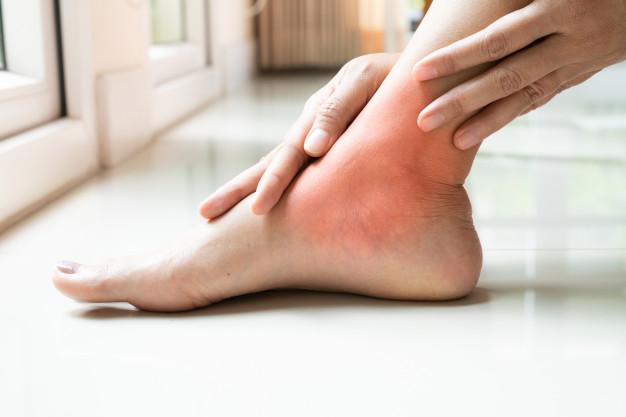
Ankle Discoloration: Causes and Treatment Options

Discolored ankles can be unsightly to look at and affect your self-esteem and confidence, but what causes the discoloration and is there anything that can be done about it? If you’ve been skipping skirts and shorts because of the color of your ankles, Dr. Clement Banda has the lowdown on what’s causing the discoloration and how to treat it.
Discolored ankles is a sign of venous insufficiency
Your veins are responsible for returning your deoxygenated blood back to your heart, but the veins in your legs have a tough job fighting gravity to force the blood upward. Poor blood flow from your veins can affect your ankles and lower legs by leaving hemosiderin deposits behind.
Hemosiderin is a protein compound that stores the iron from your blood in your body’s tissues. Sometimes deposits of hemosiderin can accumulate under your skin when your blood flow is too insufficient to return the excess iron to your immune system to be cleared away, leaving dark pigmentation in your ankles known as “stasis dermatitis.”
A common cause of vein insufficiency is varicose veins
Your veins may become varicose when they have been damaged due to faulty valves. When valves in your veins are functioning correctly, they allow the blood to pass through on its route back up to your heart. But when they’re faulty, they can prevent some of the blood from making that journey.
The blood that can’t get through pools in your feet, ankles, and legs creating a thick, gnarled vein — what we call a “varicose vein.” Although the effects of varicose veins are twisted and unsightly veins and discoloured ankles, it’s not just cosmetic damage that’s taking place here. Pooling blood can cause edema (swelling), affecting the health of your skin; and you’re more likely to develop other issues with your veins, such as venous stasis ulcers.
Sometimes traumatic events involving your veins can lead to them becoming damaged and unable to return blood flow sufficiently back to your heart. Deep vein thrombosis (DVT), trauma from an injury, or certain surgical procedures can also cause damage and ankle discoloration.
The cause of your ankle discoloration is evaluated by using a color duplex ultrasound. This creates an image using soundwaves that enables Dr. Banda to see if there are any blood clots, changes to the blood vessels in your legs and ankles, and where there is reduced blood flow.
Dr. Banda tailors a treatment plan to manage and reduce your ankle discoloration
A starting point for treatment is compression therapy. Using custom-fitted medical stockings, the circulation in your legs is improved by the stockings squeezing them to encourage the blood to flow past the faulty valves and back up to your heart, rather than pooling and causing damage. Compression therapy is most effective when combined with lifestyle changes such as walking regularly and preventing long periods standing or sitting in one position to encourage healthy blood flow.
When these conservative approaches can’t treat the venous insufficiency effectively, minimally invasive procedures are the next step. These include:
Ambulatory phlebectomy: Dr. Banda makes small slits in your skin to remove the superficial varicose veins.
Endovenous ablation: Radiofrequency or laser energy cauterizes and closes the abnormal veins in your legs.
Ultrasound-guided foam sclerotherapy: A foam solution (sclerosant) is injected into your varicose veins guided by ultrasound to push the blood out of the vein, forcing it to close.
When the faulty veins have been closed or removed, the blood in your legs is rerouted to healthier veins to create a better blood flow that prevents the blood from pooling again. As the venous insufficiency is resolved, the hemosiderin deposits can be cleared by your immune system to break down the pigmentation.
If you have discolored ankles and want to resolve the venous insufficiency causing the problem, book your consultation with Dr. Banda today here at MD Vein & Skin Specialists in Owen Brown and Colombia, Maryland.
You Might Also Enjoy...


Why Won’t My Leg Wound Heal?

Post-Inflammatory Hyperpigmentation: Why Your Acne Leaves Dark Spots

How to Tell If Your Leg Pain Might Be from Varicose Veins

Skin Cancer Warning Signs That Don't Look Like Typical Moles


